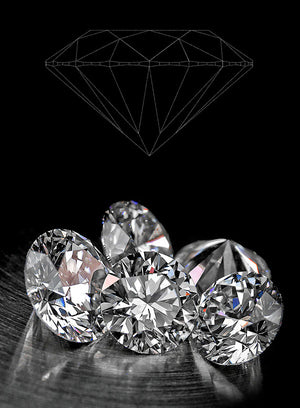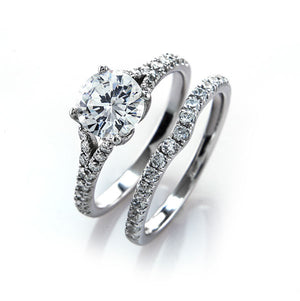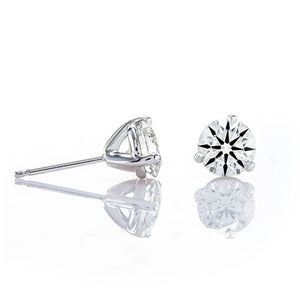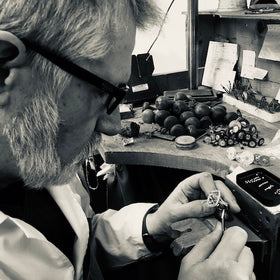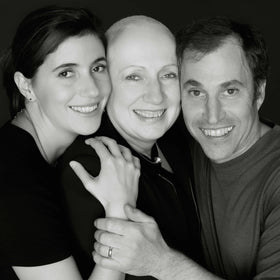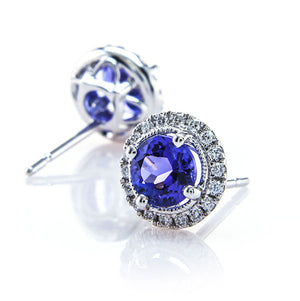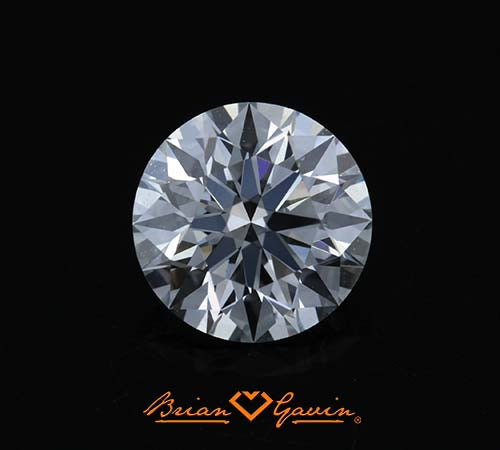
Should I buy a J color diamond for an engagement ring?
(Updated 6/11/18. Originally Posted 9/9/15)
“I’ve got about six thousand dollars to spend on a diamond engagement ring, and I know that my girlfriend would really like a one carat diamond. I realize that there are options available in the 0.90 – 0.99 carat range that might be more affordable, but there is just something about clearing the mental hurdle presented by the one carat mark for me as a guy. I also want the diamond to be absolutely eye clean, I don’t want her to be able to see any flaws within the diamond with just her eyes. Which brings me to this 1.01 carat, J-color, VS-2 clarity, Brian Gavin Signature round diamond. Should I buy a J-color diamond for an engagement ring? Is it going to look yellow? I’ve seen an I-color diamond, but not a J. How much warmer is a J color diamond going to look?”
All she’s going to notice is the sparkle!
I wouldn’t hesitate to buy a J-color Brian Gavin Signature round diamond for an engagement ring, because the combination of the center range ideal proportions, and the higher degree of optical precision exhibited by our hearts and arrows diamonds, produces so much light and sparkle that most people have difficulty determining the actual color grade of our diamonds.
I know that we tend to get caught up in all the minute details of clarity and color when buying a diamond, but our focus should actually be upon the proportions and the degree of optical precision because that is what dictates how the diamond is going to perform in terms of light performance. Factors such as diamond clarity and color are secondary considerations, and slight differences, such as one color grade from I-color to J-color, are so slight that they aren’t really worth the time spent thinking about it.
The wonderful realm of G-H-I-J Near Colorless:
Take a good look at the 1.01 carat, J-color, VS-2 clarity, Brian Gavin Signature round diamond pictured to the left. Does it look yellow? No. Because J-color isn’t really “yellow” which is why J-color diamonds are classified as “near colorless” on the GIA grading scale for white diamonds. And actually it should be noted that diamonds are not graded for color, but rather an absence of color, so even a D-E color diamond can have a trace of color and even a little bit of yellow to it if we’re going to get technical. But suffice to say that I think a J-color diamond is perfectly fine for an engagement ring.
And while there are certainly some whiter options to be found just below the 1.00 carat mark within our inventory of Brian Gavin Signature round diamonds, it is true that there is something special about a one carat diamond. Just because something is pretty much just a mental hurdle, doesn’t make it any less important in our minds… if you and your girlfriend think that it is important that she have a one carat engagement ring, then that is what you should buy.
Adjust the selection parameters appropriately to make it happen, just don’t sacrifice on diamond cut quality since that is what dictates how bright and shiny the diamond will be!
 But remember that diamond cut quality extends beyond the basic criteria represented on most diamond grading reports. In addition, to ensuring that the proportions are in the middle of the range specified for the AGS Ideal-0 rating, you also want to take the degree of optical precision into account. That is what produces the crisp and complete hearts pattern exhibited by this diamond.
But remember that diamond cut quality extends beyond the basic criteria represented on most diamond grading reports. In addition, to ensuring that the proportions are in the middle of the range specified for the AGS Ideal-0 rating, you also want to take the degree of optical precision into account. That is what produces the crisp and complete hearts pattern exhibited by this diamond.
The higher degree of optical precision combined with the super ideal proportions produces a higher volume of light return and sparkle that is more vivid and intense. This is the combination of traits that you need to really knock it out of the park!
Will a J-color diamond face-up yellow set in platinum?
While we’re on the subject of J-color diamonds, I thought it would be a good idea to address a question that we receive frequently, which is will a J-color diamond face-up yellow in platinum (or white gold)?
 Since a picture is worth a thousand words, I thought it best to answer this question by sharing this photograph of a 1.325 carat, K-color, VS-2 clarity, Brian Gavin Signature diamond set in the platinum Legera setting by Brian Gavin.
Since a picture is worth a thousand words, I thought it best to answer this question by sharing this photograph of a 1.325 carat, K-color, VS-2 clarity, Brian Gavin Signature diamond set in the platinum Legera setting by Brian Gavin.
Keep in mind that this is a K-color diamond, which is one color grade warmer than the J-color diamond you have chosen. Which means that the J-color diamond will face-up even whiter and brighter when set in platinum or white gold. Setting a diamond in platinum or white gold prongs tends to improve our perception of color by making it look whiter.
Generally speaking, setting a J-color diamond in platinum or white gold prongs makes it look more like I-color, while setting the same diamond in rose gold or yellow gold prongs makes it look more like K-color, which as you can see still looks pretty white.
Note that the color of the setting, which is also known as the ring shank is of little consequence. It is the color of the prongs or the portion of the setting that actually touches the diamond which is picked up and reflected throughout the diamond.
Should I Buy a J-color Diamond with Blue Fluorescence?
Another question that people frequently ask is whether they should buy a J-color diamond with blue fluorescence and the answer is a resounding YES because blue fluorescence also tends to improve our perception of diamond color by helping to filter out some of the warmer undertones that are present in diamonds of all color grades.
 This is Crayola Crayon Color Basics 101: Blue filters out yellow, so be sure to include Brian Gavin Blue fluorescent diamonds in your search because they look outstanding. Plus, there is the fact that the strong blue fluorescence exhibited by this 1.155 carat, J-color, VVS-2 clarity, Brian Gavin Blue fluorescent diamond looks extremely cool when the diamond is exposed to black light.
This is Crayola Crayon Color Basics 101: Blue filters out yellow, so be sure to include Brian Gavin Blue fluorescent diamonds in your search because they look outstanding. Plus, there is the fact that the strong blue fluorescence exhibited by this 1.155 carat, J-color, VVS-2 clarity, Brian Gavin Blue fluorescent diamond looks extremely cool when the diamond is exposed to black light.
The diamond will look perfectly normal and face-up light and bright when viewed under normal lighting circumstances, which makes blue fluorescence kind of a hidden super power.
Now, you might have read that blue fluorescence can cause issues in diamonds, such as making them appear cloudy or milky. While there is some truth to this statement, it only applies to diamonds with extremely high levels of blue fluorescence, such as those in the range of very strong blue, distinct blue, and an extremely high concentration referred to as over-blue.
According to the GIA Gem Trade Laboratory, fewer than 2% of gem quality diamonds are negatively affected by the presence of blue fluorescence. Which means that 98% of gem quality diamonds with blue fluorescence exhibit no negative consequences. Which means that the blue fluorescence is most likely to make diamonds look better by improving our perception of diamond color.





